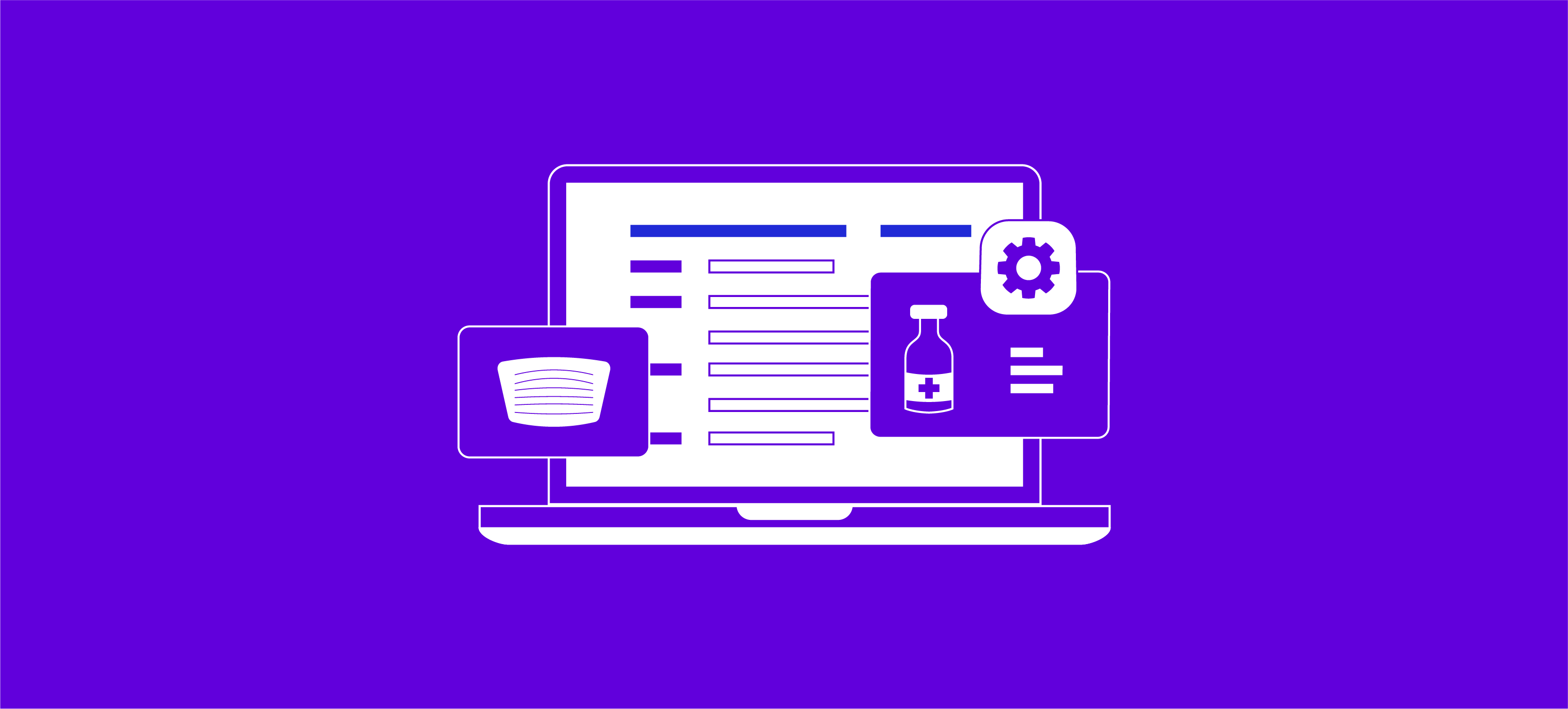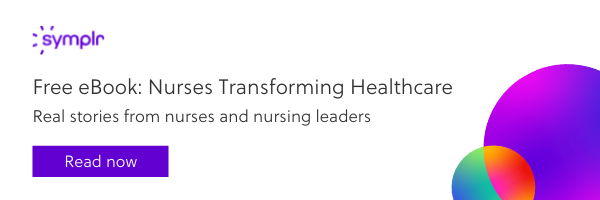
Nursing staff turnover is a persistent challenge for healthcare organizations for a number of reasons. But most often, nurses leave a hospital or health system simply because their professional needs aren’t being met. To reduce nurse turnover, healthcare leaders must identify and address the contributing factors—and to do that, they need to understand what nurses want.
The challenges of nursing staff turnover
Since 2016, hospitals have seen 83% turnover of registered nursing (RN) staff, which means that, on average, hospitals have an entirely new RN staff every six years. High turnover doesn’t just make it difficult for hospitals to fulfill their patient care objectives, it also negatively impacts budgeting.
A recent study found that the average cost of bedside RN turnover is $40,038 per nurse, and U.S. hospitals each typically lose between $3.6 million and $6.5 million per year on turnover alone. The same study found that a one percent change (up or down) in RN turnover is worth $270,800. During the COVID-19 pandemic, understaffed hospitals were forced to rely on traveling nurse services, even as the rates for those services jumped by 200%. So far in 2021, hospitals are spending almost 63% more on traveling nurses than they were before the pandemic hit.
Nurse turnover also often causes workforce management challenges in the form of staff shortages within healthcare organizations. Depending on the nurse’s role, it takes a health system anywhere from 80 to 110 days to fill an open RN position. And during that time, other nurses have to cover the gaps left by their former colleague. As a result, the remaining nursing staff may be spread too thin, which affects job satisfaction and quality of care, and even contributes to burnout—which, in turn, increases the likelihood of even more nurse turnover.
How to attract and retain top nursing talent
To increase nurse retention, healthcare administrators first need to understand what causes nurses to leave, and then address those factors within their control. A survey of nurses who left their positions found that the most common reasons were:
- Relocation
- Career advancement
- Working conditions
- Salary
- Scheduling
- Commute
Other research has shown that low patient satisfaction levels can also play a role in a nurse’s decision to leave a job.
Understanding why nurses leave can help healthcare leaders narrow down what nurses want, but that’s only half the battle. The other half is identifying and deploying programs and initiatives organizations can employ to keep nurses satisfied in their roles. The following are options available to leaders at healthcare organizations.
Incentive programs
Employee incentive programs can be a useful tool for healthcare organizations to make themselves more attractive to prospective nurses and to encourage retention among existing nursing staff. However, there are a few things healthcare leaders should take into account before rolling out an incentive program.
Some surveys have found that nurses can have a negative view of incentive programs and even regard these programs as an insult to their professionalism and work ethic. In a University of Phoenix poll of 300 nurses across the country, 99% of respondents said they are proud of the work they do, and 87% agreed that their job is more important than ever right now. Nurses take pride in delivering high-quality patient care, and the wrong incentives can be viewed as implying that nurses are motivated only by money or material rewards—and that they aren’t already doing their best.
Many healthcare organizations base nurse incentives on things like the Merit-Based Incentive Payment System’s payment adjustments or federal meaningful use payments. But while these may help the organization’s bottom line, using incentives to achieve these benchmarks could be viewed by the nursing staff as prioritizing profits over what nurses want or need to do their jobs effectively. Instead, consider incentives that are based on team or unit performance instead of individual performance.
Childcare and family support
Nurses want to be able to focus on their jobs and their patients, but that can be difficult when they have to rush home after their shift to relieve the babysitter, or get to a daycare center before it closes to pick up their child. A survey of nurses in Ireland last year found that many nurses were using the majority of their PTO days for childcare, and things aren’t much better in the U.S.—especially in the midst of the pandemic.
The COVID-19 pandemic made it clear how little support RNs have in terms of childcare and family care support, but it is a persistent issue that nurses with children or elderly parents are forced to navigate. Healthcare organizations can help deliver on what nurses want by offering childcare or in-home nursing services for adult care (or reimbursing for those services) and allowing for additional scheduling flexibility for nurses with children or dependent family members.
Career options and flexibility
As noted, opportunities for career advancement, or a lack thereof, can make the difference between retaining nurses and watching them leave. Many healthcare organizations think of career advancement as taking on a leadership or managerial role, but in many cases, that’s not what nurses want. Many nurses prefer to stay in a clinical setting and work with patients, and have little interest in leadership or nurse manager roles.
However, a lack of open management positions shouldn’t stop nurses from continuing to grow and develop in their roles. If nurses want to broaden their skill sets by working in different departments or units, or if they simply need a break from a stressful rotation, healthcare leaders should support them. Encouraging and enabling nursing staff to pursue new interests within nursing will not only improve job satisfaction and reduce nurse turnover, but it will help nurses broaden their knowledge. And the more well-rounded an organization’s staff, the more effectively they can care for their patients.
Mental health resources
A staggering 85% of Fortune 500 companies offer in-house counseling or therapy via Employee Assistance Programs (EAPs), as do many healthcare organizations. But there’s no conclusive evidence that EAPs work; in fact, anecdotal evidence suggests that these programs are often underused because employees don’t trust that the services offered are truly confidential. And in healthcare, the correlation between burnout and error rates leading to poor patient outcomes causes many nurses to worry that disclosing mental health issues—even in a purportedly confidential environment—can negatively affect their careers.
Nursing is an extremely high-stress profession, and many nurses want and deserve access to mental health services. But if nurses are hesitant to use on-site services or EAPs, healthcare leaders should consider alternative options for nurses to access these services, such as a reimbursement program for mental health visits.
Administrative support
Performing administrative tasks (such as patient tracking, drug safety, etc.) can be time-consuming and tedious for nurses, but there are steps healthcare organizations and facilities can take to support their nursing staff in completing these tasks as quickly and efficiently as possible.
One way to do this is by exploring how to automate portions of the administrative tasks. For example, your organization may consider implementing barcodes/QR codes within your EMR system. Automation helps minimize the amount of manual entries, which in turn reduces the odds of user errors within the EMR contributing to patient errors. More importantly, it allows nurses to spend less time doing administrative work (i.e., manual data entry) and more time doing what nurses want to do: help patients.
Hospitals and health systems are under extreme pressure to contain costs, deliver high quality patient care, engage staff, comply with regulatory and reimbursement policies, and provide both patients and employees with a positive experience. A sound administrative approach to nurse retention recognizes the value of the nursing team, makes it possible to measure their impact on the patient experience, and gives them a voice in improving clinical and financial outcomes.
Your nurses are a great resource not only for identifying where the greatest administrative burdens exist, but also for finding innovative solutions to help solve the administrative issues. When nurses innovate or spot a problem that needs to be solved, they have a chance to make systemic change within their units, organizations, and beyond.
Workforce management
There is no incentive or perk that will make nurses as excited to come to work as an adequately staffed unit or floor. Nurse burnout rates were on the rise even before COVID-19, and the average nurse’s workload has dramatically increased during the pandemic. An effective workforce management strategy is key to reducing nurse workloads and increasing job satisfaction and retention rates, and as we have discussed in previous articles, workforce management helps improve patient outcomes, too.
There is a nationwide shortage of nurses, and it’s getting worse every year. Healthcare leaders will need to do more to support existing nursing staff and to attract the best nurses to fill open positions, and they can start by making their organizations more responsive to the needs of nurses. Meeting these needs will benefit everyone: nurses, patients, and healthcare organizations as a whole.
The team at symplr can help your organization identify and implement solutions to create an ideal environment for your nursing staff. To learn more, request an assessment today.
For information on how symplr can help your facility support nurses through data-driven decision making, visit the symplr Workforce solutions page.
